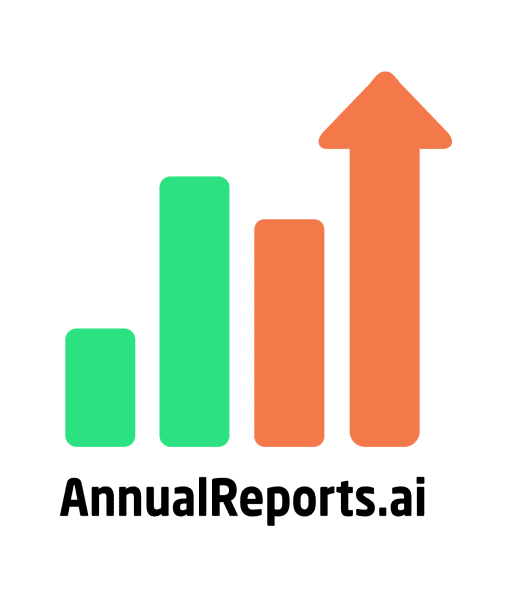An annual report is a pivotal document that communicates your organisation’s performance, achievements, and strategic direction to stakeholders such as shareholders, employees, regulators, and the general public. Crafting an effective annual report requires meticulous planning, clear communication, and engaging design. This guide provides comprehensive insights into creating a professional and impactful annual report that resonates with a global audience seeking efficient annual report generation.
Key takeaways
| Aspect | Summary |
|---|---|
| Understand your audience | Identify key stakeholders, shareholders, employees, regulators, and the public, to ensure relevant and engaging content. |
| Structure and content | Follow a clear structure with sections like the executive summary, financial statements, and corporate governance to enhance readability. |
| Use clear and engaging language | Avoid jargon, incorporate storytelling, and use data visualization for better comprehension and impact. |
| Invest in professional design | Maintain consistent branding, use high-quality visuals, and apply modern typography to create a polished report. |
| Ensure accuracy and compliance | Double-check financial data, meet regulatory standards, and disclose risks transparently to build trust. |
| Leverage technology | Use AI-powered generators like AnnualReports.ai to automate report creation, reduce costs, boost productivity, and enable real-time collaboration. |
| Proofread and edit | Conduct multiple reviews and employ professional editing to ensure clarity, consistency, and accuracy. |
| Distribute effectively | Publish the report on digital platforms, provide print copies if necessary, and use media outreach to maximize stakeholder reach. |
Let’s explore how to write the perfect annual report that informs stakeholders, strengthens credibility, and reflects your company’s professionalism. By focusing on clarity, strategic messaging, and professional design, businesses can create impactful reports that engage stakeholders and drive confidence in their future direction.
1. Understand your audience
Tailoring your annual report to the interests and needs of your stakeholders is crucial. Consider the following:
- Shareholders and investors: Focus on financial performance, return on investment, and future growth prospects.
- Employees: Highlight company achievements, culture, and developments that impact the workforce.
- Regulators: Ensure compliance with industry standards and regulations, providing transparent disclosures.
- General public: Emphasize corporate social responsibility (CSR) initiatives and community engagement.
Understanding your audience allows you to present information that is relevant and engaging, fostering trust and confidence among stakeholders.
2. Structure and content
A well-organised annual report enhances readability and ensures comprehensive coverage of essential information. A typical structure includes:
- Cover page: Design an attractive cover that reflects your brand identity and the report’s theme.
- Executive summary: Provide a concise overview of key achievements, financial highlights, and strategic goals.
- CEO’s statement: Offer a personal reflection on the past year and insights into future directions.
- Financial statements: Present detailed financial data, including balance sheets, income statements, and cash flow statements, supported by visuals like graphs and charts.
- Operational review: Discuss key achievements and challenges across various business segments.
- Corporate governance: Demonstrate transparency with a robust governance section outlining board structures, policies, and compliance measures.
- Sustainability and CSR initiatives: Highlight your commitment to social and environmental responsibility, detailing specific initiatives and their impacts.
Each section should be crafted to provide clear, relevant, and engaging information, reinforcing the organisation’s commitment to transparency and excellence.
3. Use clear and engaging language
Clarity and engagement are essential in conveying your message effectively.
- Avoid jargon: Use plain language to ensure accessibility to a broad audience.
- Tell a compelling story: Narrate your organisation’s journey, incorporating real-world examples, case studies, and customer testimonials to humanize your data.
- Data visualization: Employ infographics, charts, and images to make complex data more digestible and engaging.
Engaging language and visuals not only inform but also inspire and connect with readers on a deeper level.
4. Invest in professional design
Visual appeal significantly influences the report’s effectiveness.
- Consistent branding: Maintain consistency with your organisation’s branding elements, such as logos, colour schemes, and typography.
- Layout and typography: Use a clean and modern layout with a clear hierarchy of headings and subheadings to guide readers through the content.
- High-quality visuals: Incorporate high-resolution images and graphics that complement the content and enhance understanding.
A professionally designed report reflects the organisation’s attention to detail and commitment to quality.
5. Ensure accuracy and compliance
Accuracy and adherence to regulations are non-negotiable.
- Financial data: Double-check all financial information for correctness and completeness.
- Regulatory compliance: Ensure the report meets all relevant industry standards and legal requirements, such as IFRS or GAAP.
- Risk disclosure: Candidly address potential challenges and risks, demonstrating transparency and proactive management.
Meticulous attention to accuracy and compliance fosters trust and credibility among stakeholders.
6. Leverage technology
Utilise AI-powered generators like AnnualReports.ai to streamline report creation with precision and professionalism. These advanced solutions simplify the entire process, reducing manual effort while ensuring accuracy and compliance.
- Reduce costs by 70%: Minimise operational expenses by automating repetitive tasks, eliminating inefficiencies, and optimising resource allocation.
- Boost productivity by 300%: Accelerate report generation with AI-driven automation, ensuring faster turnaround times without compromising quality.
- Real-time visual collaboration: Enhance workflow efficiency with real-time collaboration tools, allowing approved stakeholders to review, edit, and approve reports seamlessly from a centralised platform.
Transform your reporting process with AI-driven automation, or upgrade to Pro for tailored solutions and premium features, delivering unmatched efficiency, accuracy, and value.
7. Proofread and edit
Accuracy and adherence to regulations are non-negotiable.
- Financial data: Double-check all financial information for correctness and completeness.
- Regulatory compliance: Ensure the report meets all relevant industry standards and legal requirements, such as IFRS or GAAP.
- Risk disclosure: Candidly address potential challenges and risks, demonstrating transparency and proactive management.
Meticulous attention to accuracy and compliance fosters trust and credibility among stakeholders.
8. Distribute effectively
Maximize the report’s reach through strategic distribution.
- Digital platforms: Publish the report on your organisation’s website and share it via email newsletters and social media channels.
- Print copies: Provide printed versions for stakeholders who prefer physical copies or where digital access is limited.
- Media outreach: Engage with media outlets to announce the release of the report and highlight key findings.
Effective distribution ensures the report reaches all relevant stakeholders, enhancing transparency and engagement.
Conclusion

Writing the perfect annual report requires careful planning, attention to detail, and a commitment to delivering valuable insights to stakeholders. By structuring the report effectively, using clear and engaging language, and integrating professional design elements, businesses can enhance readability and engagement. Ensuring accuracy and compliance further strengthens credibility, while leveraging AI-powered technology streamlines the creation process.
The goal of an annual report is to communicate key financial and operational data transparently while reinforcing the organisation’s strategic vision. A well-executed report not only meets regulatory requirements but also strengthens relationships with investors, employees, and the wider business community.
With AnnualReports.ai, businesses can simplify report generation, ensuring efficiency and professionalism without compromising quality. Enhance your reporting process today and present a compelling narrative that resonates with your stakeholders.

